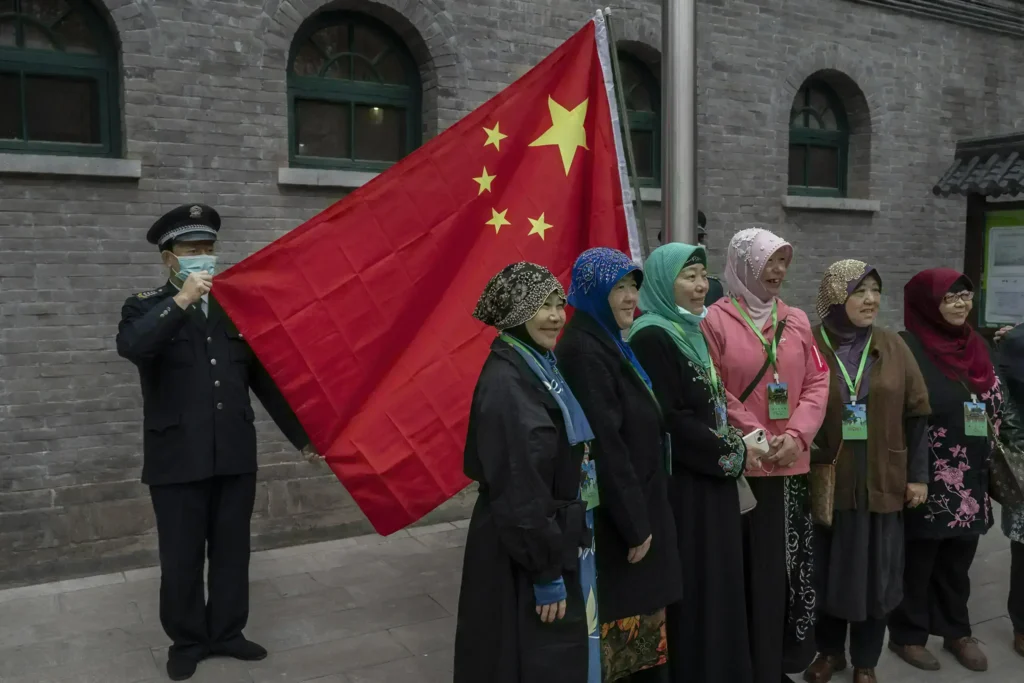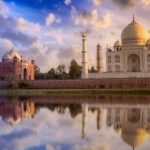Introduction:
China, officially known as the People’s Republic of China (PRC), is a country in East Asia. It is the world’s most populous country, with a population exceeding 1.4 billion. China covers approximately 9.6 million square kilometers, making it the world’s fourth-largest country by area. The capital city is Beijing, while Shanghai is the largest city.
China’s geography is incredibly diverse, encompassing mountains, high plateaus, deserts, and dense forests. It is home to the world’s highest point, Mount Everest, on its border with Nepal. Major rivers such as the Yangtze and the Yellow River are crucial to China’s agriculture and daily life.
The Chinese economy is the second-largest in the world by nominal GDP and the largest by purchasing power parity (PPP). China is a global hub for manufacturing, technology, and trade. The country has seen rapid economic growth over the past few decades, transforming from a primarily agrarian society to a global economic powerhouse.
Culturally, China has one of the world’s oldest continuous civilizations, with a history spanning over 5,000 years. It has made significant contributions to art, philosophy, literature, and science. Traditional Chinese culture places a strong emphasis on harmony, respect for elders, and family values. Major festivals such as the Chinese New Year and the Mid-Autumn Festival are celebrated with great enthusiasm.
Historically, China has seen the rise and fall of several dynasties, from the ancient Shang and Zhou to the more recent Qing dynasty. The 20th century brought significant changes, with the establishment of the Republic of China in 1912 and the People’s Republic of China in 1949 following a civil war.
China’s government is a one-party socialist republic led by the Communist Party of China (CPC). The country has a complex administrative structure with 23 provinces, five autonomous regions, four direct-controlled municipalities, and two Special Administrative Regions (Hong Kong and Macau).
China’s international influence has grown significantly, with strong diplomatic, economic, and cultural ties worldwide. It is a permanent member of the United Nations Security Council and plays a crucial role in international organizations such as the BRICS, G20, and the World Trade Organization (WTO).
Tourism is a major industry in China, attracting millions of visitors each year. The country offers a wealth of attractions, from the Great Wall and the Forbidden City to the Terracotta Army and the modern skyline of Shanghai. China’s diverse landscapes, rich history, and vibrant culture make it a fascinating destination for travelers.
110 Facts About China (2024)
Basic Information
| Number | Category | Details |
|---|---|---|
| 1. | Current Name | China |
| 2. | National Name | 中华人民共和国 (Zhōnghuá Rénmín Gònghéguó) |
| 3. | Former Names | Cathay, Middle Kingdom |
| 4. | Date of Establishment | October 1, 1949 (People’s Republic of China) |
| 5. | Date of Independence | – |
| 6. | Leadership | President: Xi Jinping, Premier: Li Keqiang |
| 7. | Government Type | Socialist one-party state |
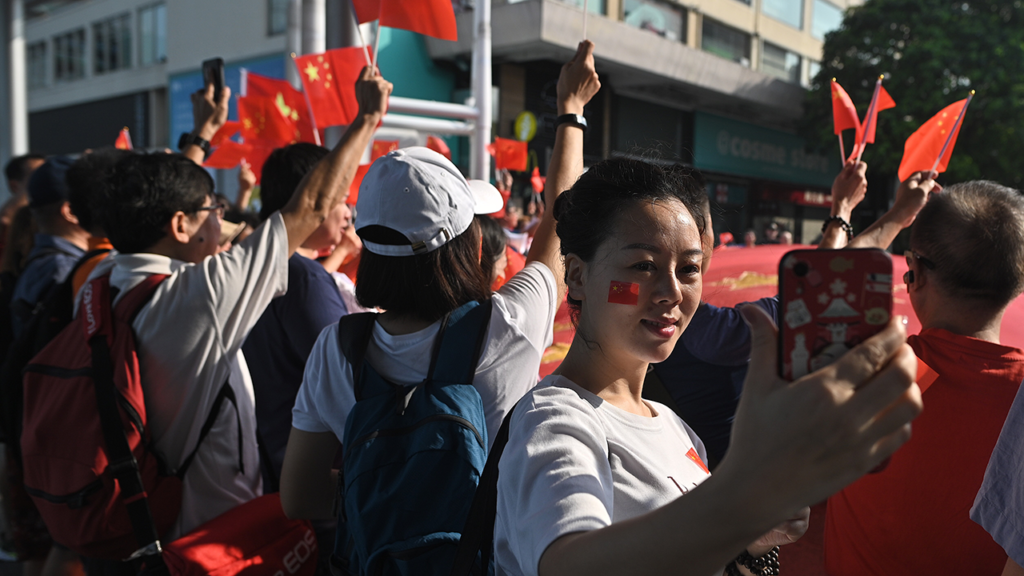
Geography
| Number | Category | Details |
|---|---|---|
| 8. | Capital City | Beijing |
| 9. | Important Cities | Shanghai, Guangzhou, Shenzhen, Chengdu |
| 10. | Land Area | 9.6 million square kilometers |
| 11. | Total Area | 9.6 million square kilometers |
| 12. | Neighboring Countries (Land) | 14 (including India, Russia, Mongolia) |
| 13. | Neighboring Countries (Sea) | South Korea, Japan, Philippines |
| 14. | UNESCO World Heritage Sites | Great Wall, Forbidden City, Terracotta Army (55 sites) |
| 15. | UNESCO World Natural Sites | Jiuzhaigou Valley, Huanglong Scenic and Historic Interest Area (14 sites) |
| 16. | Climate | Diverse; includes subtropical, temperate, and desert |
| 17. | Biodiversity | Home to giant pandas, Siberian tigers, and over 1,300 bird species |
| 18. | Famous River | Yangtze River |
| 19. | Famous Mountain | Mount Everest (shared with Nepal) |
| 20. | Coastline Length | 14,500 kilometers |
| 21. | Major Islands | Hainan, Taiwan (claimed) |
| 22. | Longest River | Yangtze River |
| 23. | Highest Waterfall | Huangguoshu Waterfall |
| 24. | Largest Lake | Qinghai Lake |
| 25. | Largest Forest | Daxing’anling (Greater Khingan Range) |
Population
| Number | Category | Details |
|---|---|---|
| 26. | Population (2024) | Approximately 1.4 billion |
| 27. | Population (1950) | 554 million |
| 28. | Population (1900) | 400 million |
| 29. | Projected Population (2070) | 1.2 billion |
| 30. | Population Density | 146 people per square kilometer |
| 31. | Urban Population (%) | 61.4% |
| 32. | Rural Population (%) | 38.6% |
Demographics
| Number | Category | Details |
|---|---|---|
| 33. | Ethnicity/Race | Han Chinese (91.5%), Zhuang (1.3%), Hui (0.8%), Manchu (0.8%), Others (5.6%) |
| 34. | Languages | Mandarin (official), Cantonese, Shanghainese, Tibetan, Mongolian |
| 35. | National Language | Mandarin Chinese |
| 36. | Religion | Buddhism (18%), Christianity (5%), Islam (2%), Taoism and Folk Religions (73%) |
| 37. | Median Age | 38.4 years |
| 38. | Life Expectancy | 77.3 years |
| 39. | Birth Rate | 10.5 births per 1,000 people |
| 40. | Death Rate | 7.4 deaths per 1,000 people |
Economic Indicators
| Number | Category | Details |
|---|---|---|
| 41. | Monetary Unit | Renminbi (Yuan) (CNY) |
| 42. | GDP | $14.7 trillion (2022 est.) |
| 43. | GDP per Capita (PPP) | $17,206 (2022 est.) |
| 44. | Income Level | Upper-middle income |
| 45. | Consumer Price Inflation | 2.4% (2022 est.) |
| 46. | Current Account Balance | $330 billion (2022 est.) |
| 47. | Exchange Rate (Per $) | 1 USD = 6.36 CNY |
| 48. | Unemployment Rate | 4.8% (2022 est.) |
| 49. | Stocks Inward ($ billion) | 1,850 (2022 est.) |
| 50. | Real GDP Growth (%) | 5.5% (2022 est.) |
| 51. | Labor Force (Million) | 775 million |
| 52. | Major Industries | Manufacturing, technology, textiles, chemicals, agriculture |
| 53. | Major Exports | Electronics, machinery, textiles, furniture, toys |
| 54. | Major Imports | Electronics, machinery, oil, minerals |
| 55. | Public Debt (% of GDP) | 60.5% (2022 est.) |
| 56. | Tax Revenue (% of GDP) | 17.1% (2022 est.) |
| 57. | Minimum Wage | Varies by region; average is ¥2,200 per month |
| 58. | Average Household Income | ¥67,000 per year |
| 59. | Inflation Rate | 2.4% (2022) |
| 60. | Interest Rate | 3.85% (2022) |
| 61. | Major Trade Partners | United States, Japan, South Korea, Germany |
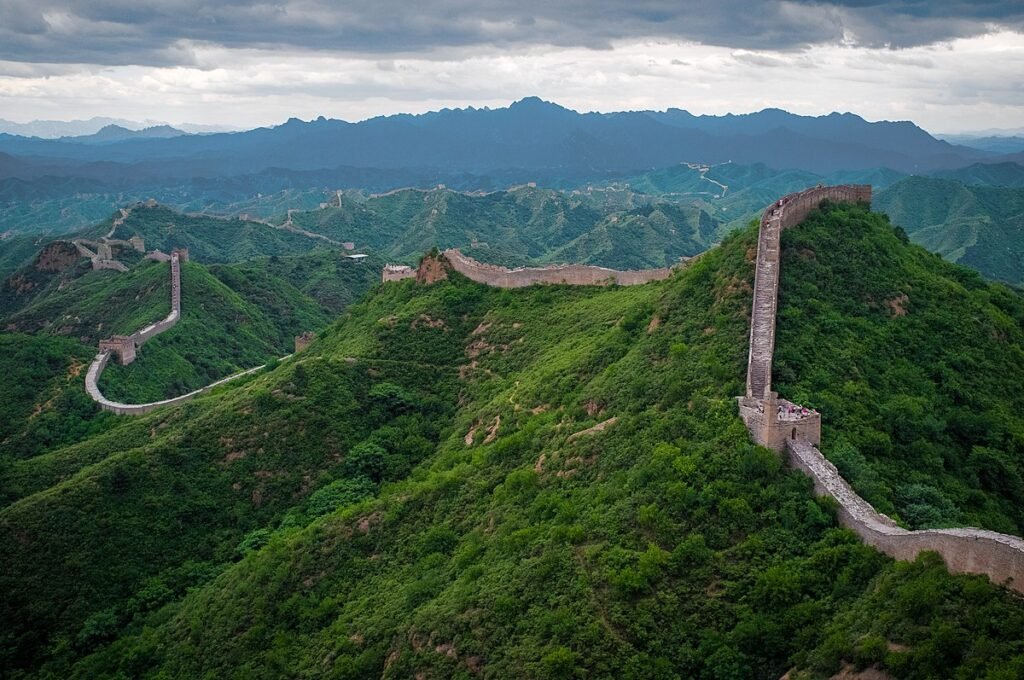
Social Indicators
| Number | Category | Details |
|---|---|---|
| 62. | Literacy Rate | 96.8% |
| 63. | Fertility Rate | 1.7 children per woman |
| 64. | Infant Mortality Rate | 7.4 per 1,000 live births |
| 65. | Under-5 Mortality Rate | 9.1 per 1,000 live births |
| 66. | National Holidays | National Day, Chinese New Year, Mid-Autumn Festival |
| 67. | Health Care System | Public healthcare provided by the state; private options available |
| 68. | Health Expenditure (% of GDP) | 6.6% (2022 est.) |
| 69. | Obesity Rate | 6.2% of adults |
| 70. | Drinking Water Source | 94% of the population has access to clean drinking water |
| 71. | Access to Sanitation | 77% of the population has access to improved sanitation facilities |
| 72. | Average Life Satisfaction | 5.9/10 |
| 73. | Major Health Issues | Cardiovascular diseases, cancer, respiratory diseases |
| 74. | Smoking Rate | 26% of adults |
Culture and Society
| Number | Category | Details |
|---|---|---|
| 75. | Famous People | Confucius, Sun Yat-sen, Mao |
| 76. | Legal Marriage Age | 20 years for women, 22 years for men |
| 77. | Gender Inequality Index | 0.168 (2021) |
| 78. | National Sport | Table tennis |
| 79. | Sport Achievements | Multiple Olympic medals in gymnastics, table tennis, diving |
| 80. | National Animal | Giant panda |
| 81. | National Fruit | Kiwifruit |
| 82. | Famous Landmarks | Great Wall, Forbidden City, Terracotta Army |
| 83. | National Dish | Peking Duck |
| 84. | Major Newspapers | People’s Daily, China Daily, South China Morning Post |
| 85. | Major TV Channels | CCTV, Hunan TV, Dragon TV |
| 86. | Popular Music Genres | Mandopop, Cantopop, traditional Chinese music |
| 87. | National Theatre | National Centre for the Performing Arts |
| 88. | National Gallery | National Art Museum of China |
| 89. | Popular Festivals | Chinese New Year, Mid-Autumn Festival, Dragon Boat Festival |
| 90. | Average Internet Speed | 47.3 Mbps |
| 91. | Most Popular TV Show | Running Man (Chinese version) |
| 92. | Most Popular Book | Journey to the West |
| 93. | Most Popular Sport | Basketball |
| 94. | Most Visited Museum | The Palace Museum |
| 95. | Largest Stadium | Beijing National Stadium (Bird’s Nest) |
| 96. | National Anthem | March of the Volunteers |
| 97. | Famous Historical Sites | Summer Palace, Temple of Heaven, Potala Palace |
| 98. | Major Brands | Huawei, Alibaba, Tencent, Xiaomi |
| 99. | Famous Foods | Dumplings, Hot Pot, Sweet and Sour Pork |
| 100. | Famous Drinks | Green tea, Baijiu, Bubble tea |
Education
| Number | Category | Details |
|---|---|---|
| 101. | Best Public University | Tsinghua University |
| 102. | Best Private University | Peking University |
| 103. | Education Rank | 8th globally |
| 104. | School Enrollment Rate | 99.2% for primary education |
| 105. | Average Class Size | 30 students |
| 106. | Notable Alumni | Xi Jinping, Yang Lan, Zhang Yimou |
| 107. | Public Spending on Education | 4.2% of GDP |
| 108. | Number of Universities | Over 2,500 |
| 109. | Popular Study Abroad Destinations | United States, United Kingdom, Australia |
| 110. | Literacy Programs | Extensive adult literacy programs available |
History
China’s history is one of the longest and most complex in the world, spanning thousands of years. The earliest known Chinese civilization, the Xia Dynasty, emerged around 2100 BCE, followed by the Shang and Zhou dynasties, which laid the foundations of Chinese culture, philosophy, and statecraft. The Warring States period saw the rise of powerful states and the eventual unification of China under the Qin Dynasty in 221 BCE.
The Han Dynasty (206 BCE – 220 CE) marked a golden age of Chinese civilization, characterized by significant advancements in science, technology, and the arts. The Tang (618-907) and Song (960-1279) dynasties continued this legacy, fostering economic growth, cultural flourishing, and technological innovation.
The Mongol-led Yuan Dynasty (1271-1368) and the subsequent Ming Dynasty (1368-1644) saw China becoming a major global power, with Zheng He’s voyages reaching as far as Africa. The last imperial dynasty, the Qing (1644-1912), faced internal strife and external pressures, leading to its eventual collapse and the establishment of the Republic of China in 1912.
The 20th century brought significant upheaval, with the Chinese Civil War resulting in the victory of the Communist Party and the founding of the People’s Republic of China on October 1, 1949. Under the leadership of Mao Zedong, China underwent dramatic social and economic changes. Deng Xiaoping’s reforms in the late 20th century opened China to the global economy, leading to rapid economic growth and modernization.
The Flag of China
The national flag of China, known as the Five-star Red Flag, features a large gold star surrounded by four smaller gold stars in the top left corner, set against a red background.
- Red Background: Represents the communist revolution and the blood of those who died in the struggle for liberation.
- Large Gold Star: Symbolizes the leadership of the Communist Party of China.
- Four Smaller Stars: Represent the unity of the Chinese people under the leadership of the Communist Party, symbolizing the social classes of the Chinese populace – the working class, the peasantry, the urban petite bourgeoisie, and the national bourgeoisie.
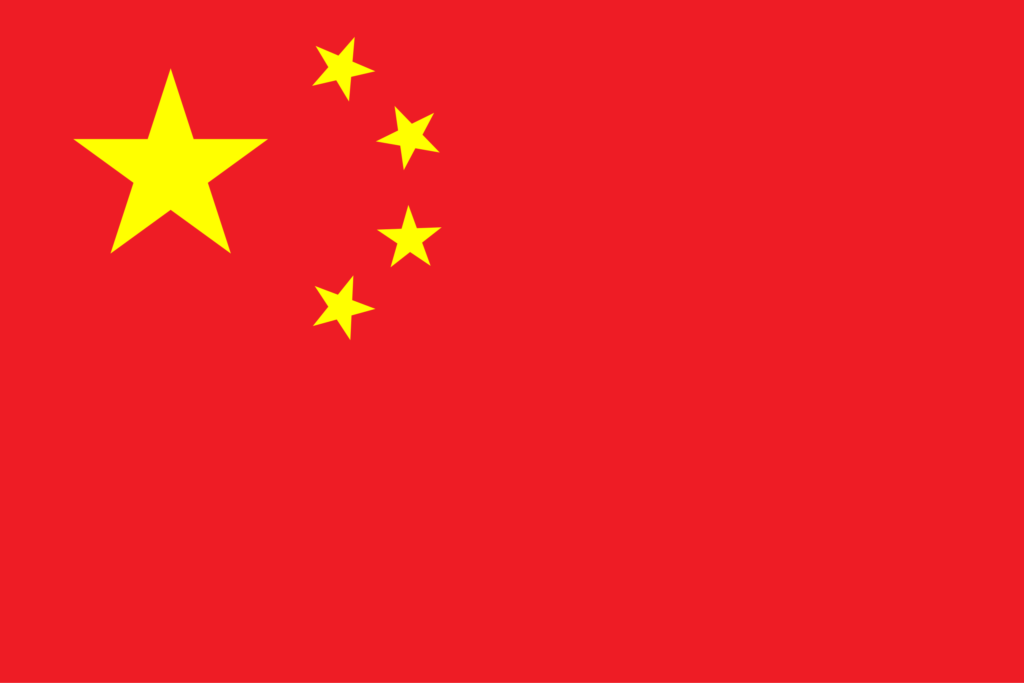
The design embodies the spirit of the Chinese revolution and the unity and progress of the Chinese people under the leadership of the Communist Party.
